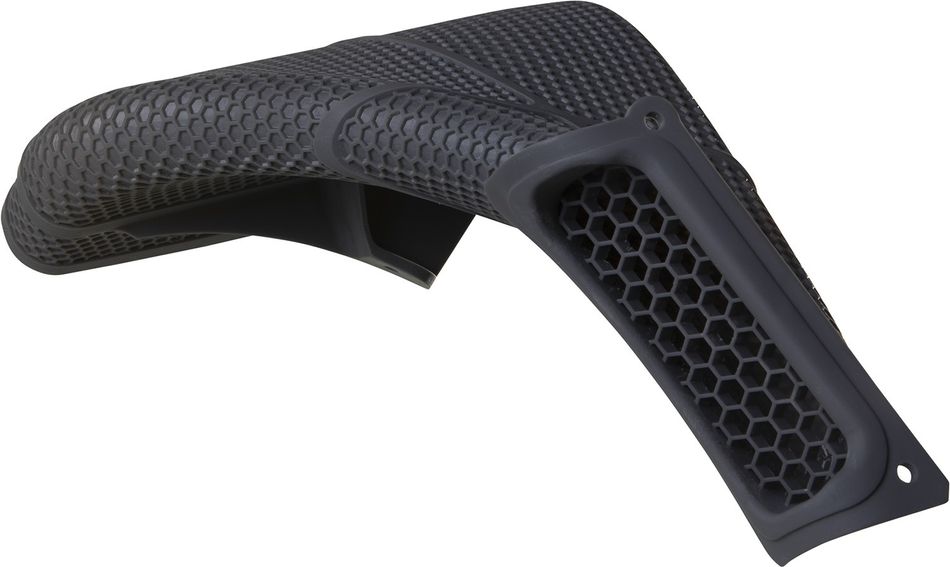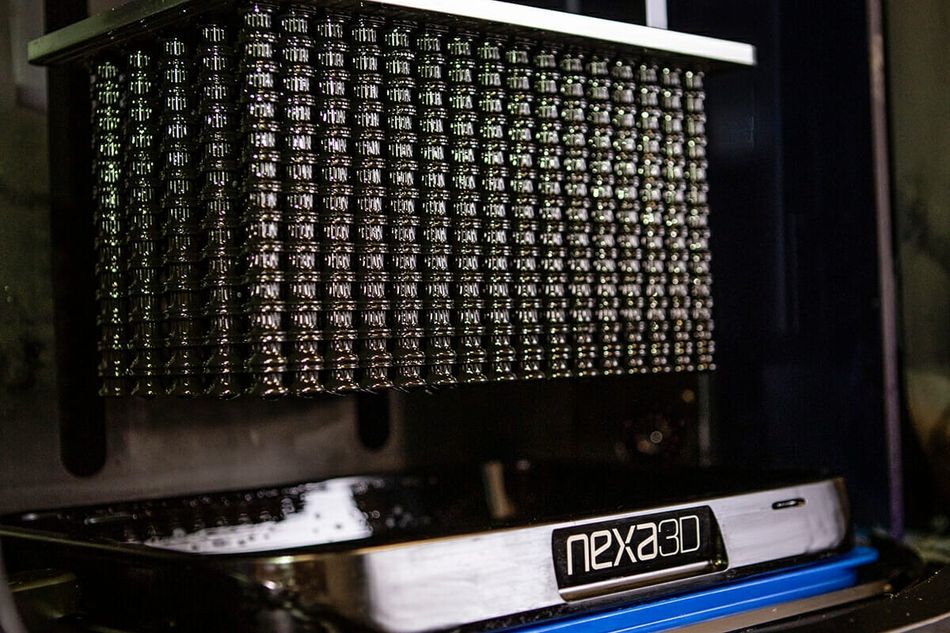How high-temp AM resins are accelerating automotive production
When used with high-temperature engineering resins, industrial-grade 3D printers can help automotive companies develop parts and prototypes with short product development cycles.
Additive manufacturing (AM) has been fueling the automotive industry for several decades. From fused filament fabrication (FFF) prototypes to high-density metal engine parts, 3D printing is now a widely used process with users in all areas of the industry. Yet many outside of the sector might be surprised at how widespread AM has become in automotive supply chains. German auto giant BMW, for instance, makes around 300,000 metal and plastic AM parts per year.[1]
Automotive AM is not limited to any single 3D printing process. In FFF and selective laser sintering (SLS) AM, engineering thermoplastics like PEEK can be printed to make high-performance parts with attributes comparable to certain metal alloys. Meanwhile, American automotive stalwart General Motors has used the technology to make 3D printed nylon risers for its assembly lines. In metal AM, industrial processes like direct metal laser sintering (DMLS) are a means of fabricating parts like aluminum engine mounts.
Another important contributor to automotive AM is resin 3D printing. While vat photopolymerization is not typically considered a high-strength 3D printing process, modern performance resins are more than capable of meeting the needs of automotive users for custom jigs and fixtures, prototypes, and even end-use parts. This article looks at some of the opportunities that resin 3D printing offers in the automotive industry. It looks at how high-performance resins are changing the SLA and DLP landscape and discusses how an industrial-grade machine from Nexa3D is opening up new horizons in automotive and beyond.
Speed on and off the road
Additive manufacturing systems are a bit like cars. An FFF 3D printer is your classic hatchback, offering affordability, versatility, and reliability. Meanwhile, an industrial SLS system is more like a pickup truck: slower than the hatchback, but packing extra power for demanding tasks. Resin 3D printing is harder to categorize, as it includes technologies with vastly different characteristics and technical specifications. But masked SLA (mSLA) — a high-speed form of resin 3D printing that cures entire layers of resin at once — can be considered something of a sports car. Not a machine you’d take on an off-road adventure, but one that leaves most other machines in its dust.
Speed is a key consideration in the automotive industry — and not just in terms of going from zero to sixty. In automotive R&D departments across the world, engineers are taking the necessary steps to reduce development cycles and iterate parts faster than their competitors. Additive manufacturing keeps these engineers in the fast lane. Not only does AM cut supply chain waiting times by bringing production in-house, it also enables rapid prototyping and rapid iteration of a wide variety of plastic, metal, and composite components. Add tool-free fabrication into the mix, and it’s easy to see why most major automotive brands are using AM for key applications.
Resin 3D printing offers notable advantages over other types of AM. Known for its excellent resolution and ability to produce fine details, resin printing is suitable for prototyping, jigs, fixtures, patterns, molds, and tooling. One known automotive user of resin 3D printing is McLaren Racing, which deploys the technology for wind tunnel components and tooling. And with an extra-fast version of resin printing like mSLA, automotive companies can attain all of the standard benefits of resin printing but in greater volumes and with shorter cycles.
Performance resins
Part strength is where resin 3D printing has historically run out of gas. While SLA and related processes offer much better resolution than FFF, most standard resins are weaker than thermoplastics, resulting in brittle parts that are not suited to mechanical applications. Limited temperature resistance is another concern. Coupled with the small build envelope of the average vat-based printer, this would seem to limit the usefulness of resin 3D printing in an industry like automotive. After all, car parts need to withstand mechanical forces, constant vibration, and elevated temperatures.
But not every resin is made the same. Some resins are chosen for their optical clarity. Others afford a degree of flexibility for bendable or shock-absorbing parts. For automotive users, the most important group of photopolymerizable materials are engineering resins. These resins can vary in terms of their strength, rigidity, temperature resistance, and other material properties, but all offer superior performance compared to general-purpose resins. Unlike general-purpose resins, engineering resins can be used for demanding end-use applications.
Although different components have different performance requirements, a viable automotive material might excel in areas such as:
Tensile strength
Heat deflection temperature (HDT)
Flame retardancy
One engineering resin that ticks these boxes and which is therefore highly suited to automotive AM is xPRO9400-FR, a rigid engineering resin from Nexa3D produced in partnership with BASF ForwardAM. The halogen-free, flame-retardant resin features an exceptionally high heat deflection temperature above 250 °C, making it suitable for parts that will be deployed in close proximity to engines and electronic systems.
How the XiP Pro can turbo-charge automotive development
Another roadblock for resin 3D printers is their average build envelope. A typical SLA machine offers a build volume of around 15 x 15 x 15 centimeters — great for small, detailed parts, but insufficient for large components like dashboard panels or for printing batches of several parts at once. For resin 3D printing to work for automotive users, this roadblock needs to be dismantled.
That’s where the Nexa3D XiP Pro and NXE 400Pro join the race. As Nexa3D’s premium resin printer for industrial users, the NXE 400Pro is built to deliver ultrafast printing speeds, supreme accuracy, and huge production throughput thanks to its 17-liter build volume. Its F1-level speed comes from Nexa3D’s patented Lubricant Sublayer Photo-curing (LSPc®) technology, a game-changing form of masked Stereolithography (mSLA) that uses a highly lubricious Everlast membrane for rapid part detachment between layers. That means shorter product development cycles, rapid iteration, and reduced time-to-market for key components.
By deploying the XiP Pro or NXE 400Pro with a high-temperature engineering resin like xPRO9400-FR, automotive engineers can dramatically accelerate their R&D, fabricating large batches of industry-standard parts for delivery to various departments within the company and beyond. Multiple iterations can be printed within a matter of hours and sent for testing, and the same equipment can be used to produce indirect manufacturing components like jigs and tooling. Few resin 3D printers are better equipped to put automotive R&D departments in pole position.
References
1. Seidel C. New Technology campus for 3D printing goes on Stream: BMW Group builds on Additive Manufacturing, with skills consolidated at Single Site [Internet]. 2020 [cited 2024 Apr 10]. Available from: https://www.press.bmwgroup.com/global/article/detail/T0309872EN/new-technology-campus-for-3d-printing-goes-on-stream:-bmw-group-builds-on-additive-manufacturing-with-skills-consolidated-at-single-site?language=en




